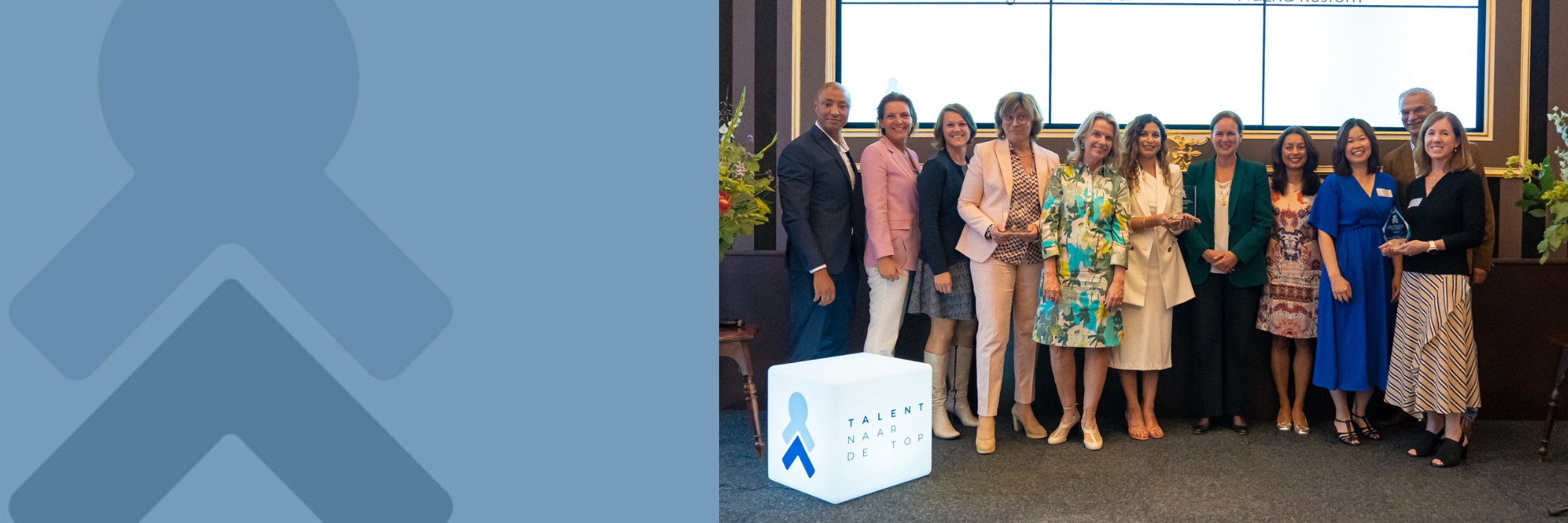The Talent naar de Top Charter
The Talent naar de Top Charter offers guiding principles and clear agreements to support organisations in achieving gender and cultural diversity and inclusion structurally and effectively.
Taking part in the Charter shows that your organisation is committed to diversity and inclusion. You will be able to compare your process and results with other organisations. You will also have an excellent network with great opportunities.
The Monitor does not only show the achievements and results in numbers, but also the underlying qualitative factors that contribute to these results. Organisations that have signed the Charter are now being monitored not only in terms of gender diversity and inclusion, but also in terms of cultural diversity.
Even though the Monitor shows that there are increasingly more women in senior management positions, there is still a long road ahead. Perhaps it will always be ‘work in progress’. A new Gender Balance Act came into force in the Netherlands in January 2022, simply because not every organisation has made sufficient progress in appointing more women in senior management positions. The new Act stipulates that one third of the Supervisory Boards of listed companies will have to consist of women. Large public and private limited companies (about 5,000) will have to show ambitious targets for improving gender diversity including an action plan as to how to achieve their goal. The Social and Economic Council of the Netherlands (Sociaal Economische Raad, SER) will motivate and facilitate companies to improve gender diversity in senior management. The results will be made public.
Many organisations that are part of the Talent naar de Top Charter already meet the requirements of the new Gender Balance Act. This just shows what commitment from directors and managers can do. And it also shows the added value of the Charter network. The Charter and its network are open to new members. You are more than welcome!
Would you like to find out more? Please contact us!Organisations taking part in the Charter
Every year, the progress in terms of gender and cultural diversity that Charter organisations have made is assessed on the basis of six criteria. The assessment report does not only provide numbers and trends, but also a benchmark overview. What’s more, we offer support to the organisations taking part in the Charter so they can improve their diversity and inclusion and make even more progress.
More than 277 organisations have signed the Charter since the beginning of 2008.
See the list of organisationsResults of the 2022 Monitor
- The share of women in top positions continues to grow steadily: gender diversity is a matter of perseverance, of sticking to it. The proportion of women in the executive board, supervisory board, and supervisory board remains on the rise. Two-thirds of organizations have more than 30% women in all governing bodies. The middle management continues to grow, and the proportion of women in the total organization is almost 50%.
- There is a negative correlation between inclusivity policies and the proportion of women in top positions; a more developed inclusivity policy does not necessarily coincide with more women in top positions. This stands out even more because these organizations are consciously focused on gender diversity and inclusivity.
- On several dimensions of gender diversity policies, we observe for the first time a lower level of development than in previous years. However, there is noticeable growth in inclusivity policies.
- Differences between organizations are visible in terms of organizational size: especially small organizations perform well concerning the proportion of women in top positions.
- The sector with the largest growth in the proportion of women in top positions in 2022 is healthcare and well-being. In middle management, the increase is most significant in the legal profession and consultancy/ICT/infrastructure/construction.
- Experienced charter organizations are an example for the younger generation: they have a higher proportion of women in top/middle management and in governing bodies.
- Measurability and registration: making cultural diversity measurable and complying with GDPR regulations.
- Commitment: lack of involvement from executives.
- Awareness and mindset: persistent prejudices and a lack of willingness to go beyond conventional paths.
- Sufficient time: patience is required for the effects of interventions.
- Cultural differences themselves, such as differing expectations between executives and employees.
- In 2022, search firms, on average, aimed for 48% women in composing the longlist and shortlist for top positions, similar to the previous year.
- Of all candidates they proposed for a longlist, on average, 45% were women, much higher than the previous monitoring year (30%).
- Of the total number of placements, 48% were women, comparable to last year.
- For all placements by agencies in executive board positions, on average, 39% were women, much lower than last year (55%).
- For all placements in supervisory board/supervisory board positions, on average, 54% were women (compared to 59% last year).
- More than half of the search firms feel they still lack sufficient potential candidates from different cultural backgrounds.
